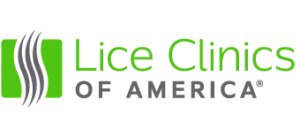Chemicals in Lice-Treatment Products Linked to Health Problems in Children
A study in Occupational and Environmental Medicine reports what many have feared for decades—that “exposure to certain pyrethroids, at environmental levels, may negatively affect neurobehavioral development by six years of age.” Pyrethroids are a class of chemicals used in insecticides, including the most popular head-lice medications.
For the study, the researchers measured levels of five pyrethroid metabolites in the urine of women in the early stages of pregnancy and, later, in their 6-year-olds to see if there was a link between being exposed to the chemical in utero and childhood, and behavior that could suggest neurodevelopmental damage.
“Pyrethroids are neurotoxins, says clinic owner Amanda Westerman, owner of Lice Clinics of America – Westerman. “They work by disrupting the nervous systems of insects, killing them in the process. Health advocates have for years questioned the medical wisdom of putting neurotoxins on children’s scalps.”
Pyrethroid Chemicals in Lice Products: Study Results
There were three pyrethroid metabolites chemicals in lice products that showed up most often in the urine of mothers and their children: trans-DCCA, cis-DBCA, and cis-DCCA. The conclusion of the study was that “Overall, children with the highest levels of metabolites in their urine were three times more likely to have abnormal behavior than those with lower levels. As a result, the researchers concluded that pyrethroids might alter neurochemical signaling in the brain.”
This follows a 2015 study in Environmental Health that found that “Pyrethroid pesticides cause abnormalities in the dopamine system and produce an ADHD phenotype in animal models, with effects accentuated in males versus females. However, data regarding behavioral effects of pyrethroid exposure in children is limited.”
While neither study proves a medical link between pyrethroids and behavioral change in children, there is certainly reason for concern. Pyrethroids remain the first line of defense against head lice recommended by many doctors. This is changing, but not necessarily due to health concerns. Multiple studies performed in recent years have found that most head lice in the United States and other countries are developing resistance to pyrethroids, so these neurotoxins that parents are putting on their children’s heads are losing effectiveness.
New Recommended Treatments for Head Lice
The medical world is starting to shift gears. In 2015 the American Academy of Pediatrics (AAP) updated its guidance on head lice treatment as new products were introduced after the AAP’s 2010 report. The new report was published in the journal Pediatrics, and it highlights some exciting new developments in the battle against head lice, including the revolutionary AirAllé medical device.
“The ideal treatment of lice should be safe, free of toxic chemicals, readily available without a prescription, easy to use, effective, and inexpensive,” the AAP said. The article notes that the overall spending on lice treatment has risen to nearly $1 billion annually, with as many as 12 million children contracting head lice each year.
The AAP lists the AirAllé medical device as an effective lice treatment device: “The AirAllé (Larada Sciences, Salt Lake City, UT) is a custom-built machine that uses one 30-minute application of hot air in an attempt to desiccate the lice.” It uses no chemicals and instead dehydrates lice and eggs. Clinical studies found that the AirAllé kills live lice and more than 99 percent of eggs in a single session. In addition to being chemical-free, the treatment eliminates the need for weeks of nitpicking to make sure all eggs are removed.
The AirAllé medical device is available exclusively at Lice Clinics of America treatment centers. Lice Clinics of America is the world’s largest and fastest-growing network of professional lice clinics, with hundreds of clinics in some 20 countries.
Lice Clinics of America has successfully treated more than 950,000 cases of head lice. The company has more than 265 clinics in 20 countries, making it the world’s largest network of professional lice treatment centers. Lice Clinics of America – McKinney is located at 3120 Hudson Crossing, Suite A2, McKinney, TX 75070 and is open 7 days a week by appointment. Call 972-954-2334 or visit https://liceclinicsmckinney.com for more information or to schedule an appointment.











